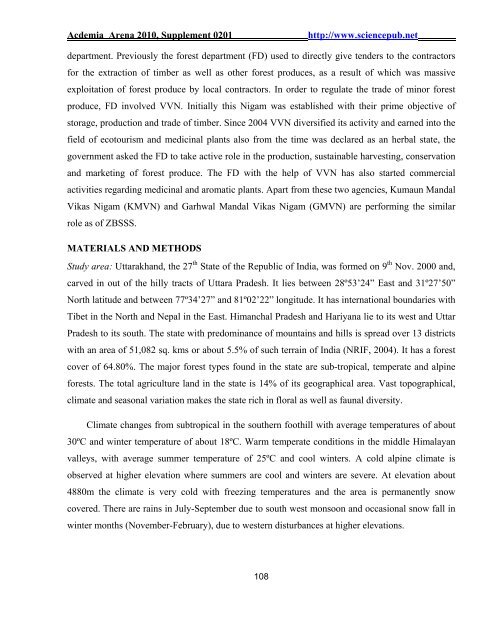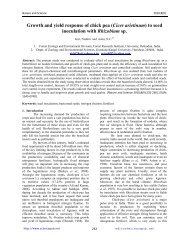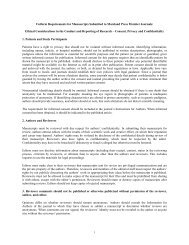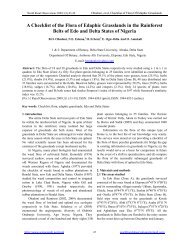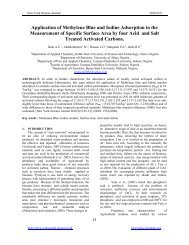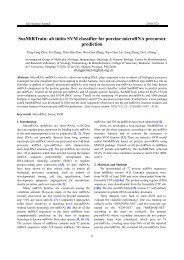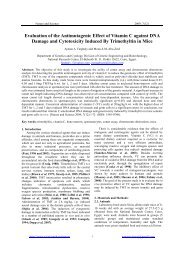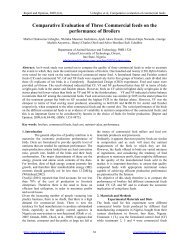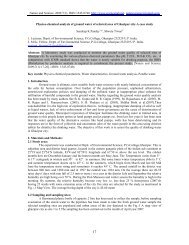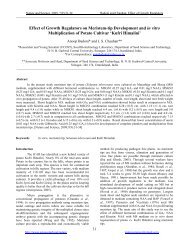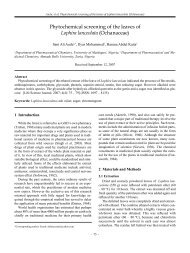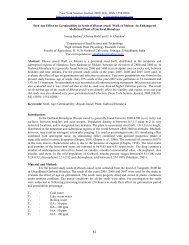Ecological, Social and Commercial Role of Lichens in India with ...
Ecological, Social and Commercial Role of Lichens in India with ...
Ecological, Social and Commercial Role of Lichens in India with ...
Create successful ePaper yourself
Turn your PDF publications into a flip-book with our unique Google optimized e-Paper software.
Acdemia Arena 2010, Supplement 0201<br />
http://www.sciencepub.net<br />
department. Previously the forest department (FD) used to directly give tenders to the contractors<br />
for the extraction <strong>of</strong> timber as well as other forest produces, as a result <strong>of</strong> which was massive<br />
exploitation <strong>of</strong> forest produce by local contractors. In order to regulate the trade <strong>of</strong> m<strong>in</strong>or forest<br />
produce, FD <strong>in</strong>volved VVN. Initially this Nigam was established <strong>with</strong> their prime objective <strong>of</strong><br />
storage, production <strong>and</strong> trade <strong>of</strong> timber. S<strong>in</strong>ce 2004 VVN diversified its activity <strong>and</strong> earned <strong>in</strong>to the<br />
field <strong>of</strong> ecotourism <strong>and</strong> medic<strong>in</strong>al plants also from the time was declared as an herbal state, the<br />
government asked the FD to take active role <strong>in</strong> the production, susta<strong>in</strong>able harvest<strong>in</strong>g, conservation<br />
<strong>and</strong> market<strong>in</strong>g <strong>of</strong> forest produce. The FD <strong>with</strong> the help <strong>of</strong> VVN has also started commercial<br />
activities regard<strong>in</strong>g medic<strong>in</strong>al <strong>and</strong> aromatic plants. Apart from these two agencies, Kumaun M<strong>and</strong>al<br />
Vikas Nigam (KMVN) <strong>and</strong> Garhwal M<strong>and</strong>al Vikas Nigam (GMVN) are perform<strong>in</strong>g the similar<br />
role as <strong>of</strong> ZBSSS.<br />
MATERIALS AND METHODS<br />
Study area: Uttarakh<strong>and</strong>, the 27 th State <strong>of</strong> the Republic <strong>of</strong> <strong>India</strong>, was formed on 9 th Nov. 2000 <strong>and</strong>,<br />
carved <strong>in</strong> out <strong>of</strong> the hilly tracts <strong>of</strong> Uttara Pradesh. It lies between 28º53’24” East <strong>and</strong> 31º27’50”<br />
North latitude <strong>and</strong> between 77º34’27” <strong>and</strong> 81º02’22” longitude. It has <strong>in</strong>ternational boundaries <strong>with</strong><br />
Tibet <strong>in</strong> the North <strong>and</strong> Nepal <strong>in</strong> the East. Himanchal Pradesh <strong>and</strong> Hariyana lie to its west <strong>and</strong> Uttar<br />
Pradesh to its south. The state <strong>with</strong> predom<strong>in</strong>ance <strong>of</strong> mounta<strong>in</strong>s <strong>and</strong> hills is spread over 13 districts<br />
<strong>with</strong> an area <strong>of</strong> 51,082 sq. kms or about 5.5% <strong>of</strong> such terra<strong>in</strong> <strong>of</strong> <strong>India</strong> (NRIF, 2004). It has a forest<br />
cover <strong>of</strong> 64.80%. The major forest types found <strong>in</strong> the state are sub-tropical, temperate <strong>and</strong> alp<strong>in</strong>e<br />
forests. The total agriculture l<strong>and</strong> <strong>in</strong> the state is 14% <strong>of</strong> its geographical area. Vast topographical,<br />
climate <strong>and</strong> seasonal variation makes the state rich <strong>in</strong> floral as well as faunal diversity.<br />
Climate changes from subtropical <strong>in</strong> the southern foothill <strong>with</strong> average temperatures <strong>of</strong> about<br />
30ºC <strong>and</strong> w<strong>in</strong>ter temperature <strong>of</strong> about 18ºC. Warm temperate conditions <strong>in</strong> the middle Himalayan<br />
valleys, <strong>with</strong> average summer temperature <strong>of</strong> 25ºC <strong>and</strong> cool w<strong>in</strong>ters. A cold alp<strong>in</strong>e climate is<br />
observed at higher elevation where summers are cool <strong>and</strong> w<strong>in</strong>ters are severe. At elevation about<br />
4880m the climate is very cold <strong>with</strong> freez<strong>in</strong>g temperatures <strong>and</strong> the area is permanently snow<br />
covered. There are ra<strong>in</strong>s <strong>in</strong> July-September due to south west monsoon <strong>and</strong> occasional snow fall <strong>in</strong><br />
w<strong>in</strong>ter months (November-February), due to western disturbances at higher elevations.<br />
108


